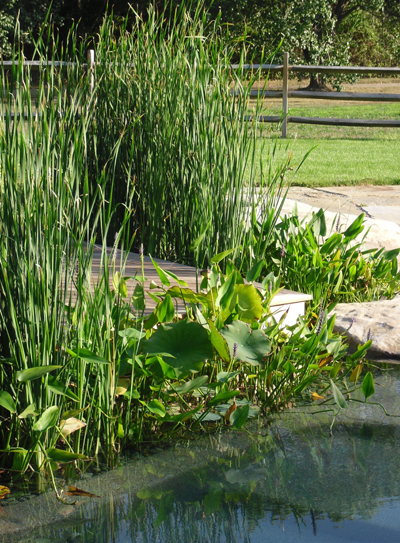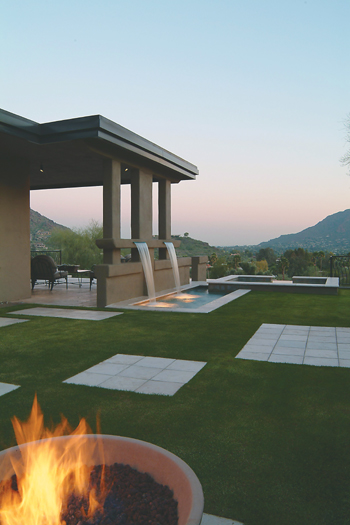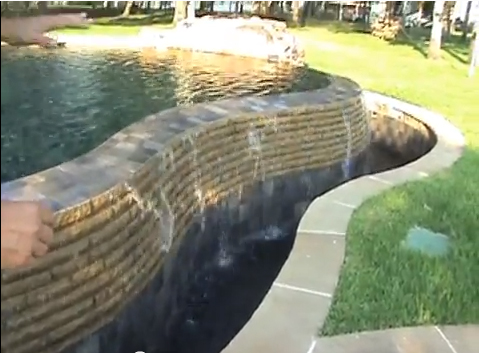Pools & Spas
In many ways, installing a surge tank is simple. If you get it right, all will be well. As is the case with so many watershape systems, however, getting it wrong can lead to serious problems. Let’s start with some terminology. Surge tanks are receptacles used to accommodate the surge of displaced water in systems that can be generally defined as
When these clients decided that they wanted to have a swimming pool, they knew above all else that they did not want another box of blue water. By contrast, as avid patrons of Disney World, the Princeton, N.J., homeowners had decided that their pool should be what they called “Disney natural” – not as completely naturalistic as a real pond, but natural enough so that they and their children could
Last time, I mentioned the fact that many of my design clients these days are environmentally aware and want to make certain I can help them devise landscapes and hardscape treatments that make sense in eco-friendly ways. To at least the same extent, clients who contact us at The Green Scene (Northridge, Calif.) want us to work with their pool, spa, fountain and pond designs in the same way: They want us to minimize the
It’s a rare project in which a watershaper has the opportunity to execute a complete design without compromise. In our Scottsdale, Ariz.-based business, we often work with upscale clients on custom pool and spa installations, and it seems that there’s always some element or other in the design that ends up being altered or left out. It sometimes reaches the point where we start to feel as though
It seems obvious that all watershapers would have a clear understanding of the materials commonly used in pipes and fittings and would know all about the primers and glues and mechanical approaches used to connect plumbing joints. That’s not always the case, however, which is why I’m rarely shocked to see
Of all the design innovations that have spread through the general watershaping community in the past 20 years or so, I can’t think of any that has captured consumer imaginations as dramatically as have vanishing-edge designs. They rose from minimal presence in the late 1980s to become the most recognizable and popular of all
In most projects, great work requires the watershaper’s personal understanding of who the clients really are, deep down. That doesn’t mean we have to become our clients’ best friends or marry into their families. Rather, creating watershapes at the highest level involves a different kind of relationship, one in which a
Skimmers are found in just about every type of watershape imaginable, including gunite, vinyl-lined, fiberglass and aboveground pools as well as in-ground and portable spas – not to mention ponds, streams and fountains. In each case, specific skimmers have been designed to serve the individual applications. For purposes of this discussion, let’s keep things simple by
In conceptual terms, watershape filtration is about as simple as it gets: Water that picks up insoluble organic materials in the form of dirt, debris, dust and algae is drawn by the pump to pass through a filter medium of one type or another. The medium – whether sand, a cartridge or diatomaceous earth – traps these materials and lets only
By Ron Gibbons The wetlands of Long Island provide a natural backdrop for this exquisitely…




















